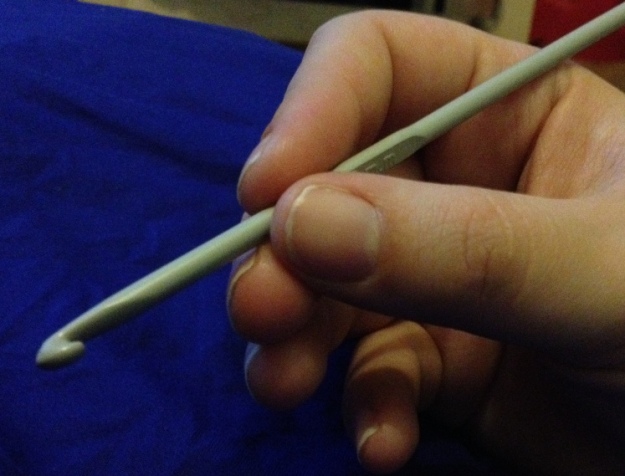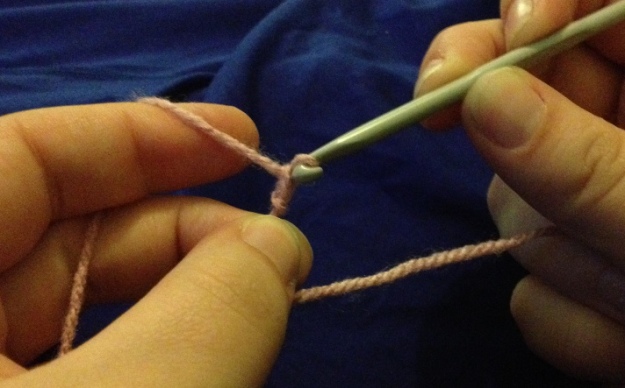Getting started
Holding the hookÂ
Most people hold the hook like a pencil, as shown below:

Slip knot:
Crochet usually starts with a slip knot. To make one:
- Make a loop of wool around your fingers
- Pull a second loop through the first
- Pull tight and adjust loop to the right size (to fit your hook)



Â
Chain Stitch:Â
This is the most simple crochet stitch, but is an essential part of nearly all types of crochet.
Start with a slip knot.
1. Loop the wool over the hook (yo)
You now have 2 loops on your hookÂ

2. Pull the new loop through the original one
You are left with 1 loop, and have made 1 chain stitch

Your finished chain should look similar to ‘finger knitting’ but more consistent, as using a hook means stitches should always be a similar size.

Â
Joining a chain with a slip stitch:
Â
Push the hook through the middle of the first chain made
Â
Make a loop of wool over the hook, and pull through the original loops, leaving the new loop on the hook and joining the start and end of the chain together, creating a circle.
Â
Â
Abbreviations:
Ch – chain stitch (eg 3ch means 3 chain stitches)
Yo (also written yoh) – Yarn over hook –looping the wool over the hook to create a new loop
Â
Practicing chain and slip stitches – a Little Flower:
Start with a slipknot
-
*(chain 7, miss 2 stiches, slip stitch in next stitch)
-
repeat from * 4 times
 Fasten off
Â
Â












